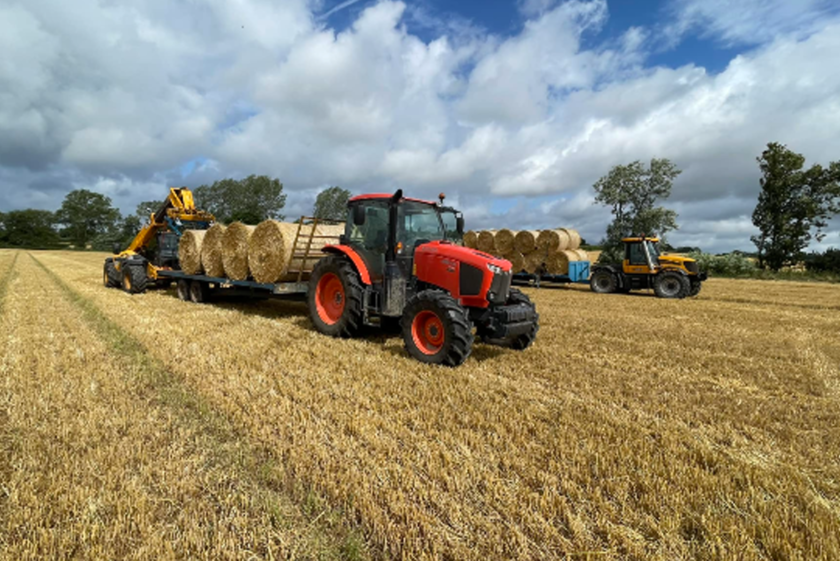
Harvesting winter straw for our cattle
As winter approaches, it becomes crucial to provide our cattle with sufficient bedding and feed. Winter straw serves an essential function in ensuring livestock comfort and sustenance during the colder months. This post will guide you through the process of harvesting winter straw, exploring the considerations and techniques involved. From choosing the right type of straw to employing effective harvesting methods, we will cover the essential aspects of this vital agricultural task. By understanding the best practices and potential challenges, you can make informed decisions that benefit both your cattle and your farm’s productivity during the winter season.
Choosing the Right Straw
Selecting the appropriate straw for cattle involves considering the distinct benefits of various types. Wheat straw is often favoured for its softness, making it an excellent choice for bedding, whereas barley straw is slightly more robust and is commonly used as feed. Factors such as the type of crop, the harvesting season, and the specific needs of your cattle play a crucial role in your selection. Ensuring the straw is free from mould and contaminants is vital to maintain the health of your livestock. It’s also worth noting that the quality of straw can vary, so sourcing from reliable suppliers is essential.
Harvesting Techniques
Traditional methods of harvesting straw involve manual labour, where workers use hand tools to cut and gather the straw. This approach can be more time-intensive but allows for precise control over the quality of the harvested material. On the other hand, modern techniques utilise advanced machinery such as combine harvesters and balers, which expedite the process considerably. These machines can cut, thresh, and bale straw in one seamless operation, enhancing efficiency and productivity. Choosing the right equipment is crucial and depends largely on the scale of your farming operation and available resources. Balers, in particular, come in various types, including round and square balers, each suited to different farming needs. Proper maintenance of machinery is essential to avoid breakdowns during the critical harvesting period. Additionally, coordinating the timing of harvest to align with optimal weather conditions can help in preserving the quality of the straw, reducing the risk of moisture damage.
To keep straw in optimal condition throughout winter, it should be stored in a dry, well-ventilated area to prevent dampness and mould. Stacking bales correctly and shielding them with tarpaulins or storing them in a shed can safeguard against adverse weather. Regular inspections are vital for spotting early signs of moisture or pest issues. Using pallets to elevate bales off the ground can also help with air circulation and reduce the risk of moisture damage. Implementing rodent and insect control measures is necessary to protect straw stocks from potential damage. Preventive actions, such as setting traps or using natural deterrents, can be effective in maintaining the integrity of the stored straw. Regular checks ensure any issues are promptly addressed, preserving the quality of the straw for feeding and bedding.
Ensuring Nutritional Value
While straw serves as a basic nutritional source, it typically requires supplementation to provide a balanced diet for cattle. Introducing additional nutrients such as protein and minerals can significantly boost the dietary value of straw. Monitoring the health of your cattle is vital, as it allows for the early detection of nutritional deficiencies or imbalances. Collaborating with a veterinary nutritionist can provide tailored advice on optimising the diet of your livestock. Ensuring that supplements are uniformly mixed with the straw can improve intake and prevent selective feeding. Regularly adjusting the nutritional plan based on seasonal changes and the specific needs of your cattle ensures they receive the necessary nourishment throughout the winter.
Challenges and Solutions
Weather can be unpredictable and may delay the harvesting process, posing significant challenges. Equipment breakdowns are another concern, particularly during peak harvesting periods. Regular upkeep and having spare parts on hand can mitigate such issues. The variability in market demand can also impact the availability and cost of straw, making it essential to stay informed about market conditions and trends. Establishing good relationships with local suppliers can provide a buffer against these fluctuations.
Another challenge is managing the moisture content of the harvested straw. If straw is too wet, it can become mouldy, compromising its quality and safety. Using moisture meters to check the levels before storage and ensuring proper ventilation can help in maintaining ideal conditions. Pests such as rodents and insects can cause damage to stored straw, so implementing pest control measures is crucial.
Labour shortages can also pose difficulties, especially when manual methods are employed. Investing in efficient machinery and training workers to use it can alleviate some of these pressures. Additionally, ensuring that all workers follow safety protocols reduces the risk of accidents, which can be particularly high during the busy harvest season.
Finally, adhering to sustainable farming practices can be challenging but rewarding. Practices such as crop rotation and soil conservation can improve long-term productivity, making future harvests more manageable and fruitful.
Successful winter straw harvesting necessitates a strategic approach, balancing the selection of suitable straw types, effective harvesting techniques, and proper storage solutions. Key challenges, such as unpredictable weather, equipment maintenance, and pest control, must be addressed to ensure high-quality straw. By remaining informed about market conditions and implementing preventive measures, farmers can better navigate these obstacles.
Advances in agricultural machinery and techniques continue to streamline the process, offering more efficient and reliable methods for harvesting and storing straw. Embracing sustainable practices, such as crop rotation and soil conservation, not only benefits current yields but also contributes to the long-term health of the farmland.
Looking forward, the integration of new technologies and continued focus on sustainability are expected to further enhance the efficiency and quality of winter straw harvesting. As farmers adapt to these innovations, they can expect improved outcomes for their cattle and overall farm productivity during the colder months.



